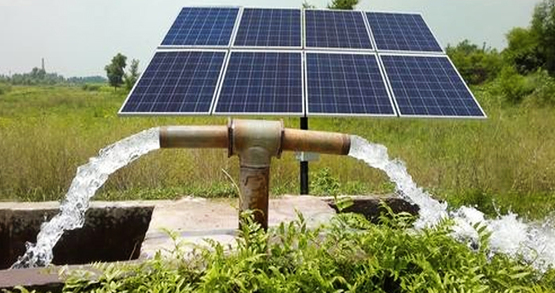How does a solar irrigation system work?
The pumps used for the transport of the water are equipped with solar cells. The solar energy absorbed by the cells is then converted into electrical energy via a generator which then feeds an electric motor driving the pump. Most of the traditional pump systems mainly work with a diesel engine or with the local power grid. However, these two modes of operations present disadvantages compared to solar pumps
In many rural areas, especially in developing and emerging countries, the access to the electricity grid is not always guaranteed. In this case, farmers cannot rely on the traditional irrigation system. Thus, using an independent and alternative energy system can be a solution for the farmer to secure a safe power source and for the public grid to avoid saturation.
Diesel pumps are slightly more efficient than AC powered pumps as they allow greater flexibility. However, one of the main constraints is that this system relies on the fuel availability, added to a greater impact on the environment. Diesel-driven pumps are cheaper than solar-powered pumps but the operating costs are quite high and depend heavily on the diesel price. In solar-powered systems, it works the other way round, that is, although this system is relatively expensive, the source of energy is free, therefore, after the amortization period, there are no longer operating costs (only the maintenance costs must be considered). Therefore, solar pumps turn out to be a viable long term investment.

